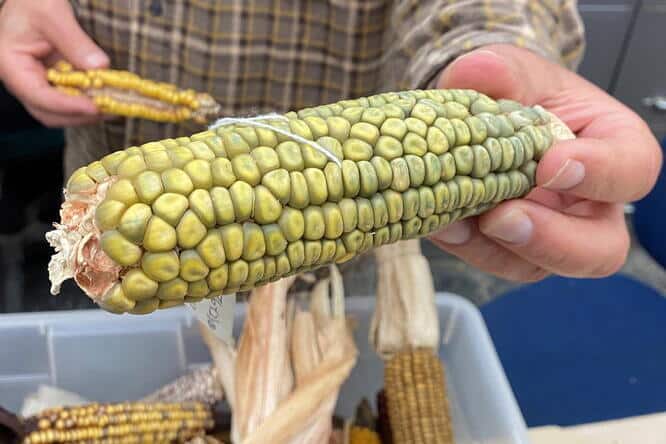Proposed USDA consolidation puts landmark maize genetics collection in jeopardy.
Corn is supposed to look perfect — straight rows, bright yellow kernels, uniform ears. But not in this field. At the Maize Genetics Cooperation Stock Center on the University of Illinois Urbana-Champaign campus, researchers cultivate the mutants. Gnarled cobs, tassels where ears should be, speckled kernels — all are part of a carefully curated 100,000-stock collection of genetic oddities that fuel the future of corn innovation.
“The mutant collection is a functional genomics engine,” says Martin Bohn, professor in the Department of Crop Sciences at U. of I. “These lines allow us to dissect gene function directly — something not possible with conventional panels. It’s the difference between observing variation and understanding its genetic basis.”
That understanding has already paid off. The gene behind sweet corn’s flavor and long shelf life — shrunken2 — was first identified in this collection in the 1950s by U. of I. professor John Laughnan. The result? Illini Supersweet Corn, now a staple on summer tables and a foundational product for agribusinesses like Illinois Foundation Seed, Inc.
“Without the stock center, sweet corn would be a little less sweet,” Charlie Thompson, vice president and director of research for IFSI’s vegetable business unit, said in a news release. “We were the first to market Dr. Laughnan’s sweet corn hybrids. It’s cool that a local connection has had such a global impact.”
Companies and universities worldwide rely on this resource — part of the USDA’s National Plant Germplasm System — for work on stress tolerance, disease resistance, and sustainability traits. U. of I. researchers recently used the collection to identify genes that help corn recruit beneficial microbes for nitrogen use. Those insights are already shaping breeding strategies to cut fertilizer use and improve environmental outcomes.
“None of this would be possible without access to the materials provided by the maize stock center,” Bohn says.
But the collection — and the cold storage infrastructure and staff that support it — is under threat. As reported by the University of Illinois, the USDA’s proposed 2026 budget includes a plan to shut down the Urbana ARS location. That facility houses both the maize stock center and the National Soybean Germplasm Collection. Under the plan, the corn stock collection would be relocated to Ames, Iowa.
Bohn doesn’t think the move is feasible — or wise.
“The stock center is historically rooted at the University of Illinois, and the concentration of expertise, infrastructure, and institutional continuity in Urbana is unmatched and irreplaceable,” he says. “In my view, if you touch it, you break it.”
Moving the collection means risking delicate seed integrity, disrupting ongoing research, and requiring major new investments in facilities and staff at a different site — all with questionable benefit.
Brad Stotler, director of government affairs for the Illinois Corn Growers Association, says the loss would be significant.
“Relocating the collection risks the loss of critical institutional knowledge and slows progress on research that benefits American agriculture — all at significant and unnecessary expense,” Stotler says. “The maize collection has 72 years of history on the Illinois campus, and it’s more important than ever to invest in these programs and protect the well-established research collaboration between ARS and U. of I. scientists.”
The House appropriations committee has already issued language rejecting proposed program terminations. But because USDA is proposing relocation rather than termination, the battle may move to the Senate — and beyond.
Until then, researchers, seed companies, and advocates are pushing hard to protect a corn collection that’s anything but ordinary.
